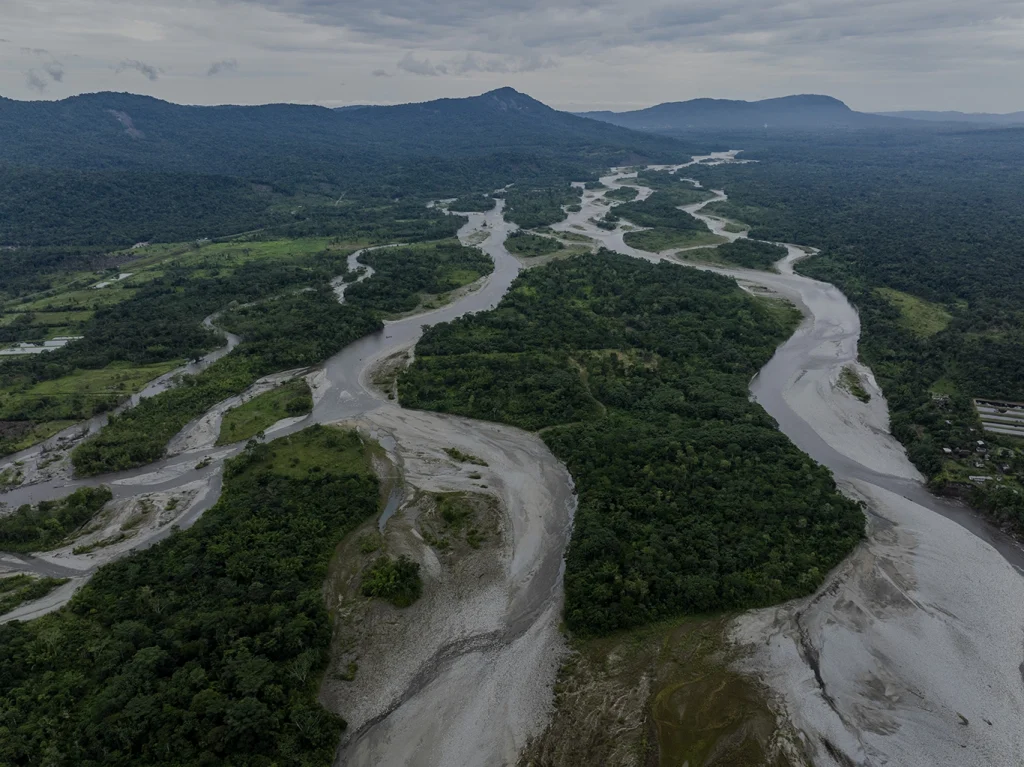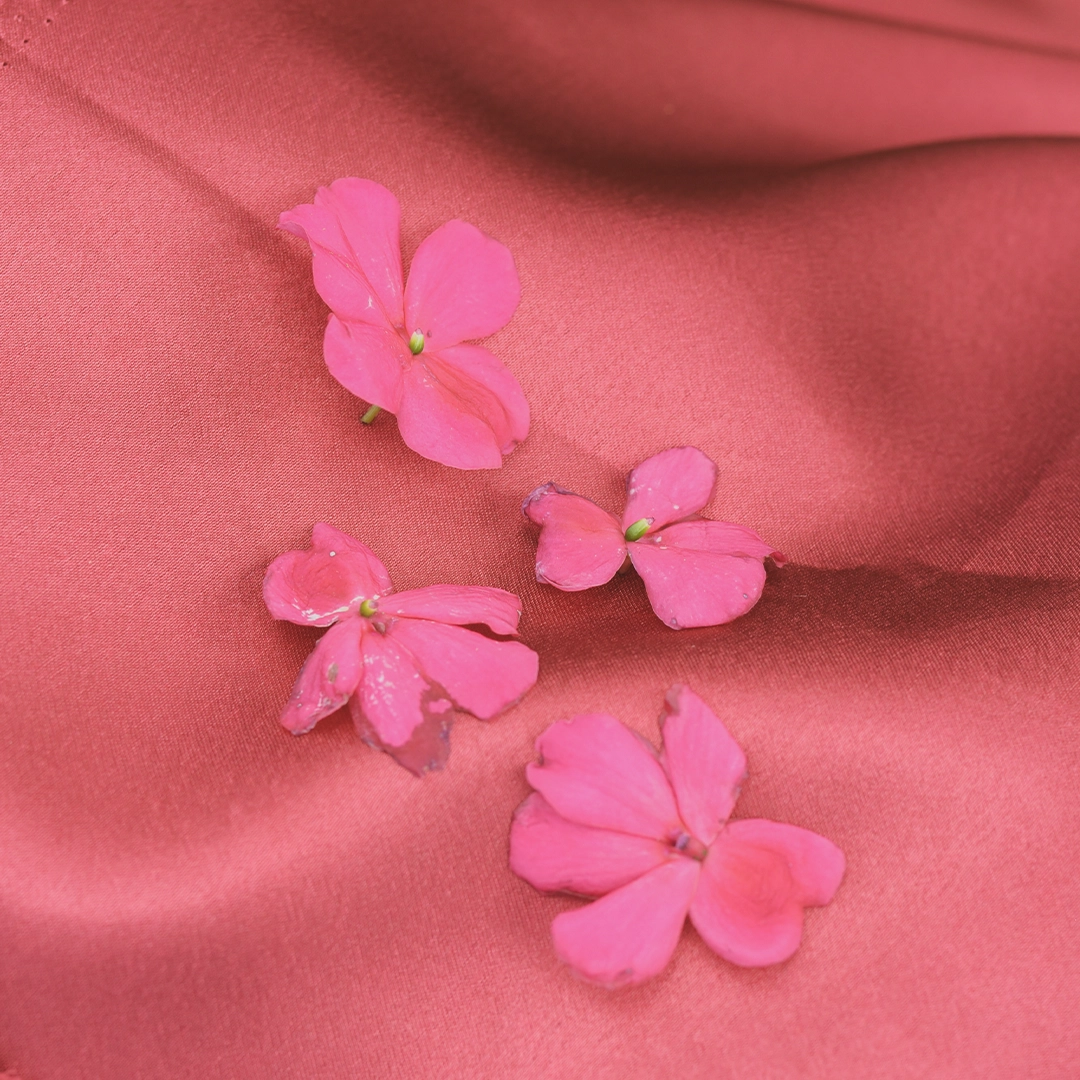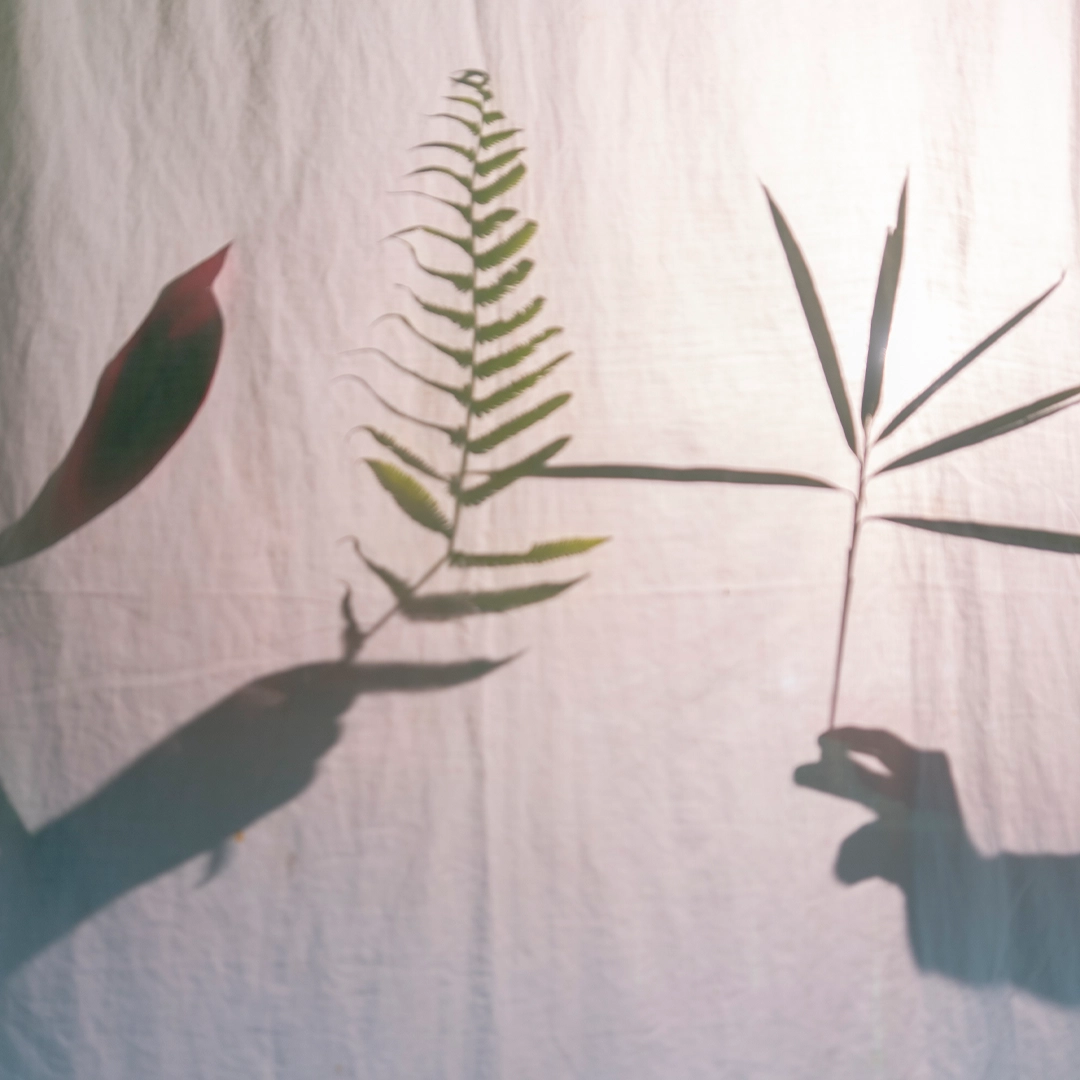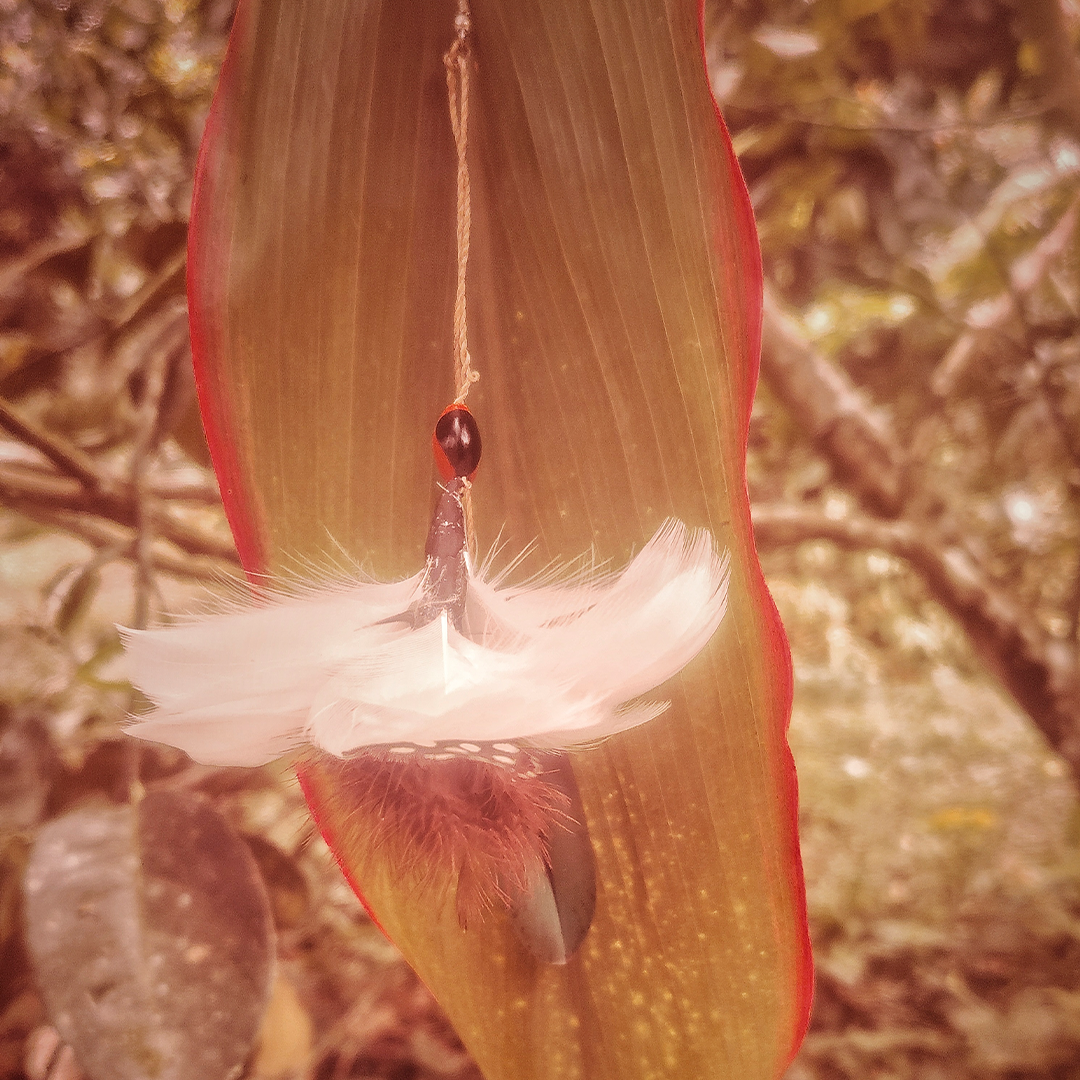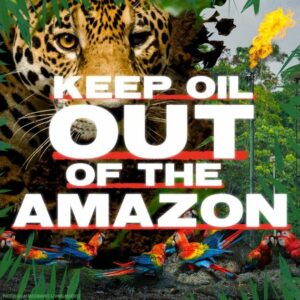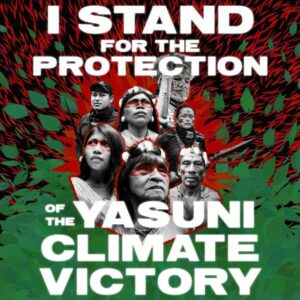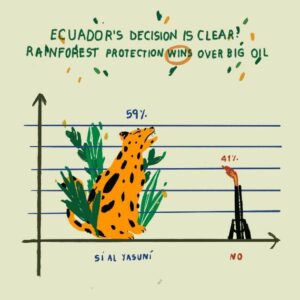Indigenous women in the Upper Amazon are using photography as a tool to map, document, and reconnect with themselves and their territories. Here, we share the work of four Indigenous women photographers who participated in Relatos en Territorio (Stories in Territory), an educational program developed by Johanna Alarcón, a photojournalist, educator, and visual storyteller based in Ecuador, as part of her CatchLight Global Fellowship.
The workshop was developed in collaboration with the Kuirasundekhu Indigenous Guard of the A’i Cofán community of Sinangoe, the Gente de Río communications school in Secoya Remolino, and the Yuturi Warmi Indigenous Guard of Serena. It focused on giving Indigenous women and youth in the Upper Amazon new tools and skills to map and relate to their territories, particularly through photography.
When we heard that Johanna wanted us to help share this project, we were honored, and we knew it would fit seamlessly into Amazon Frontlines and Ceibo Alliance’s body of work. Together, for over a decade, our organizations have collaborated with Indigenous women and youth across the Amazon through film and photography workshops, equipping them to utilize creative tools and carry ancestral knowledge forward while producing visual narratives that shed light on their changing realities.
In this digital exhibition, you will find a selection of the resulting final works from the meetings and exchanges that took place during Relatos en Territorio (Stories in Territory) alongside behind-the-scenes reflections from the participants themselves.
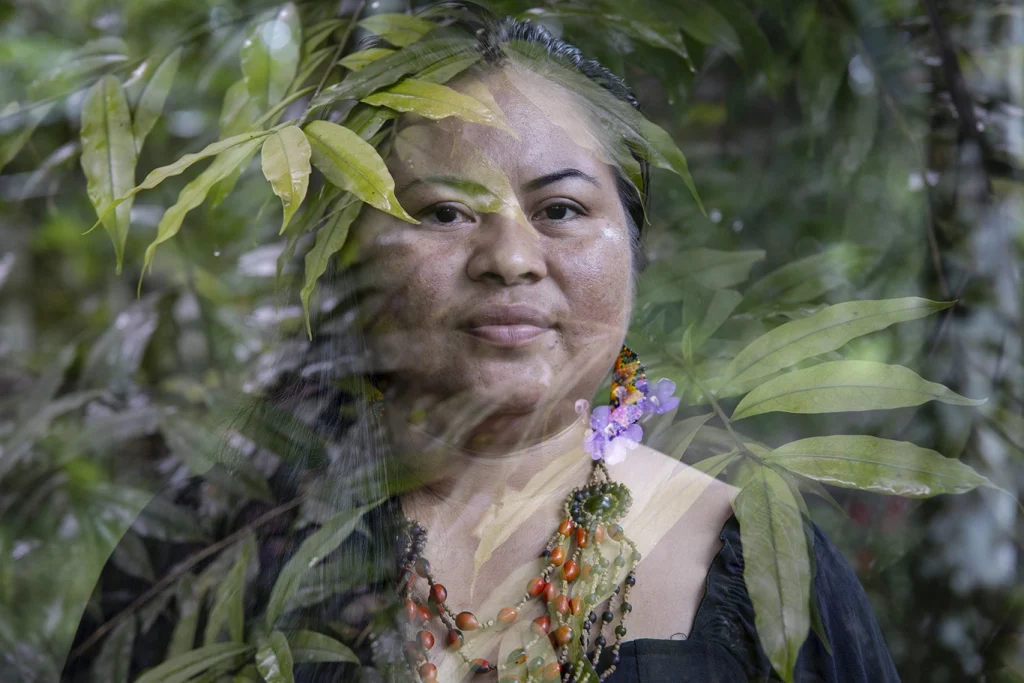
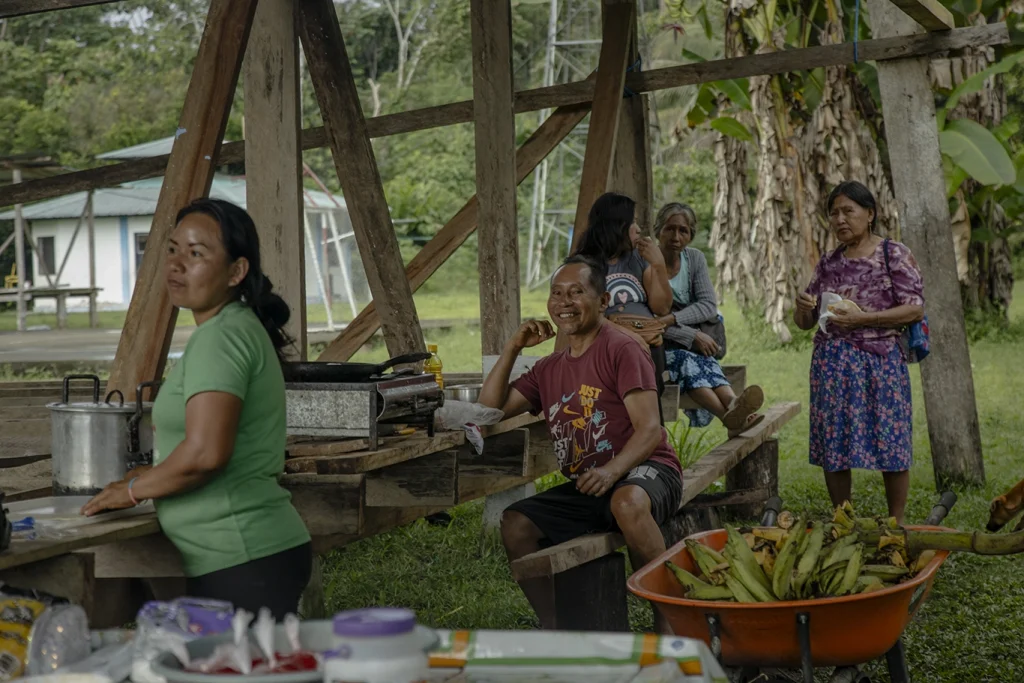
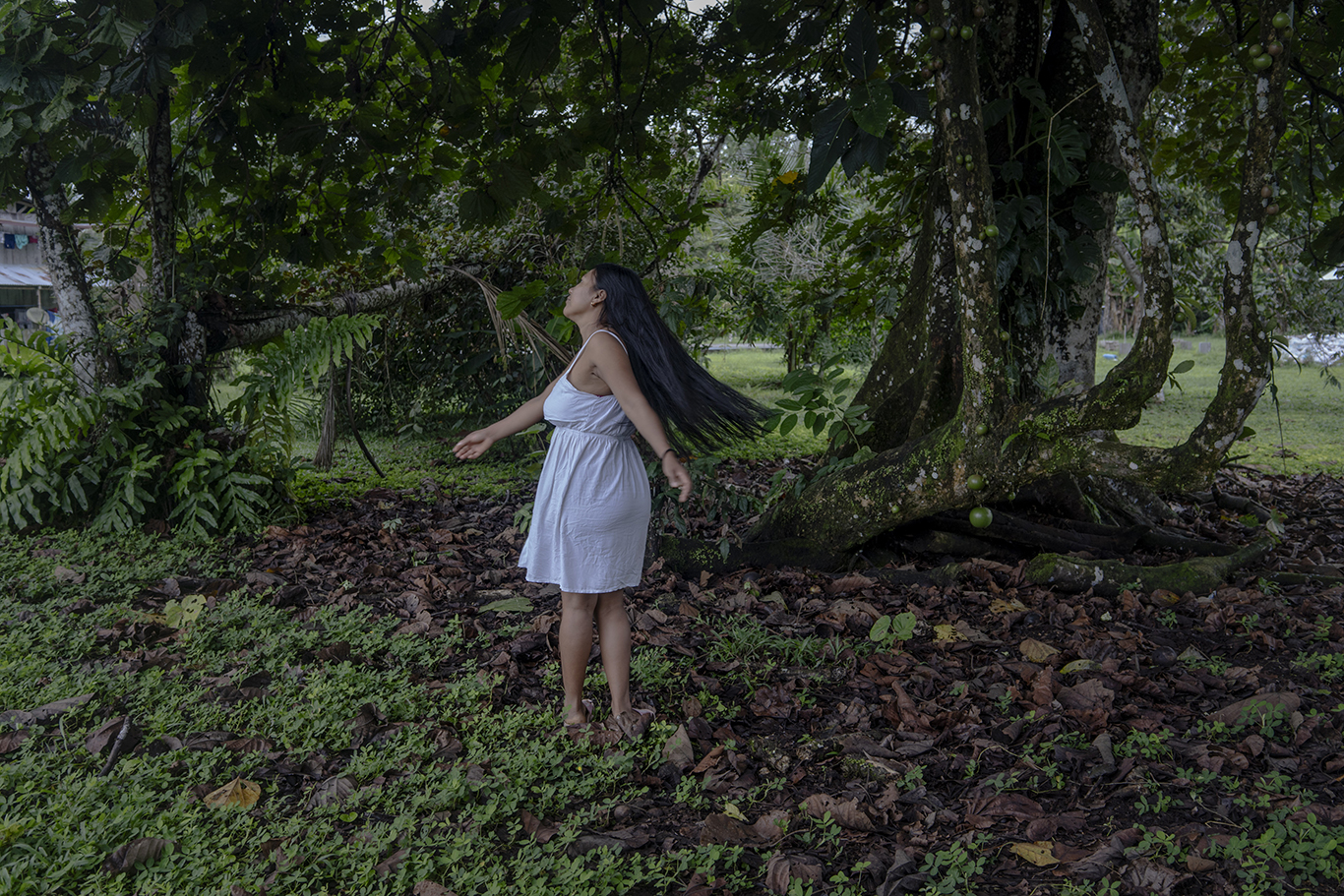
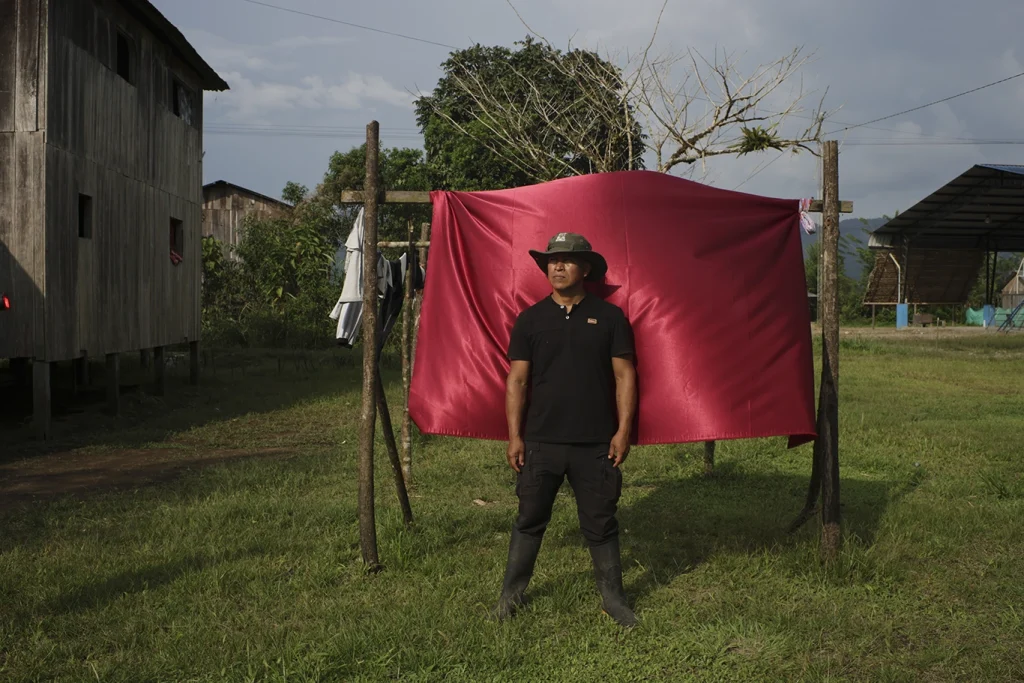
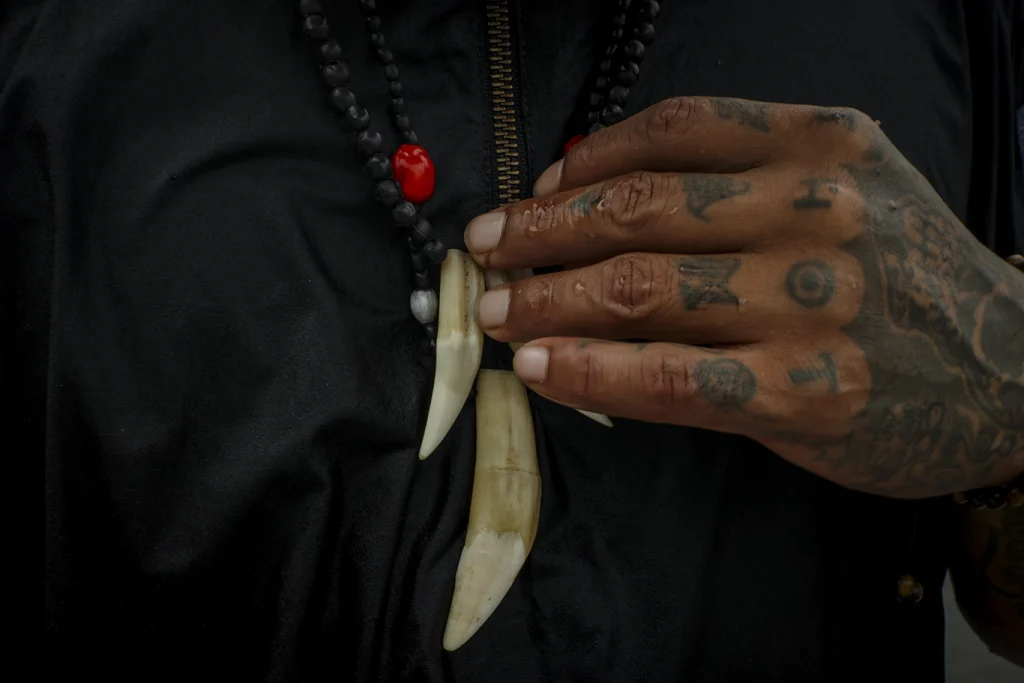
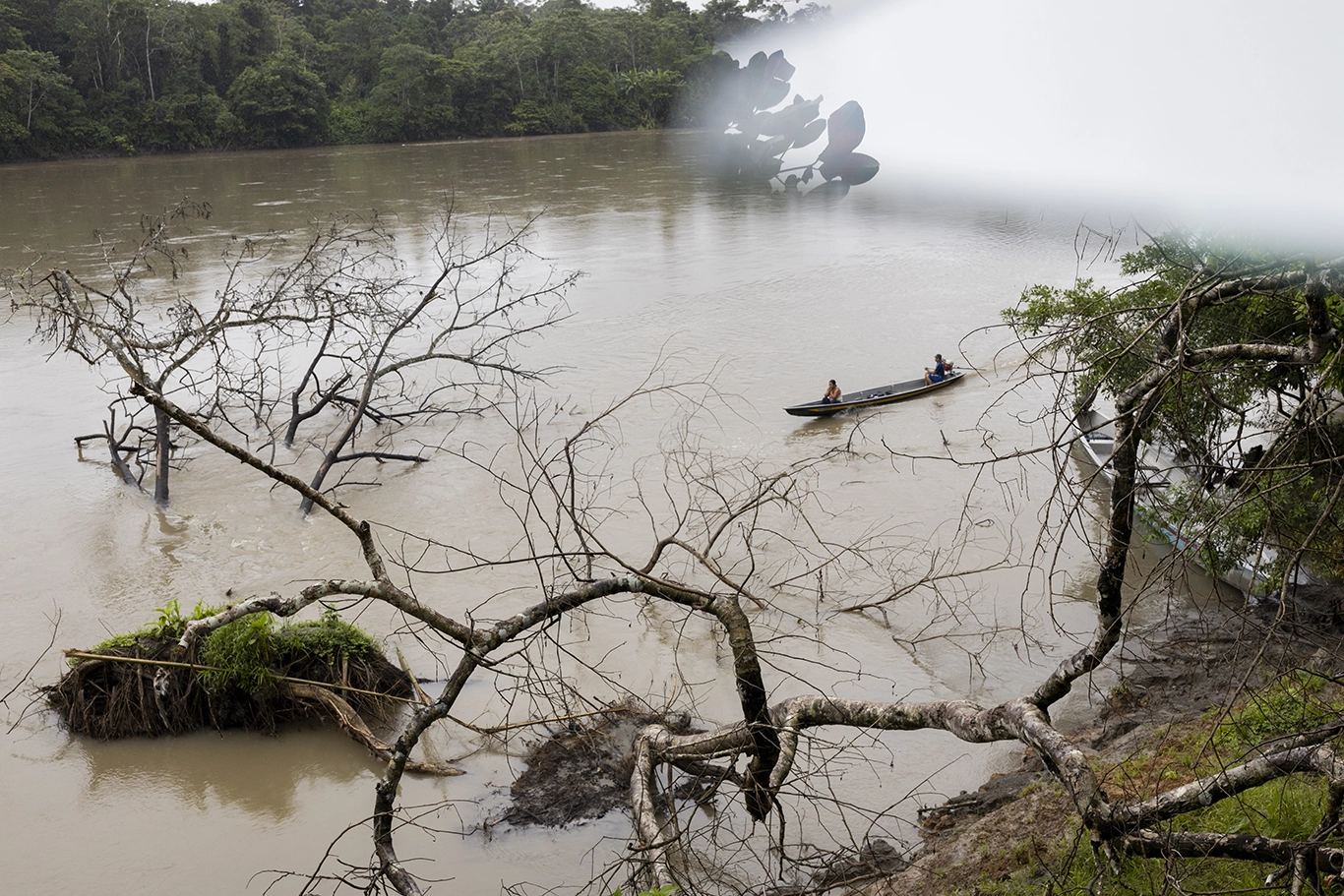
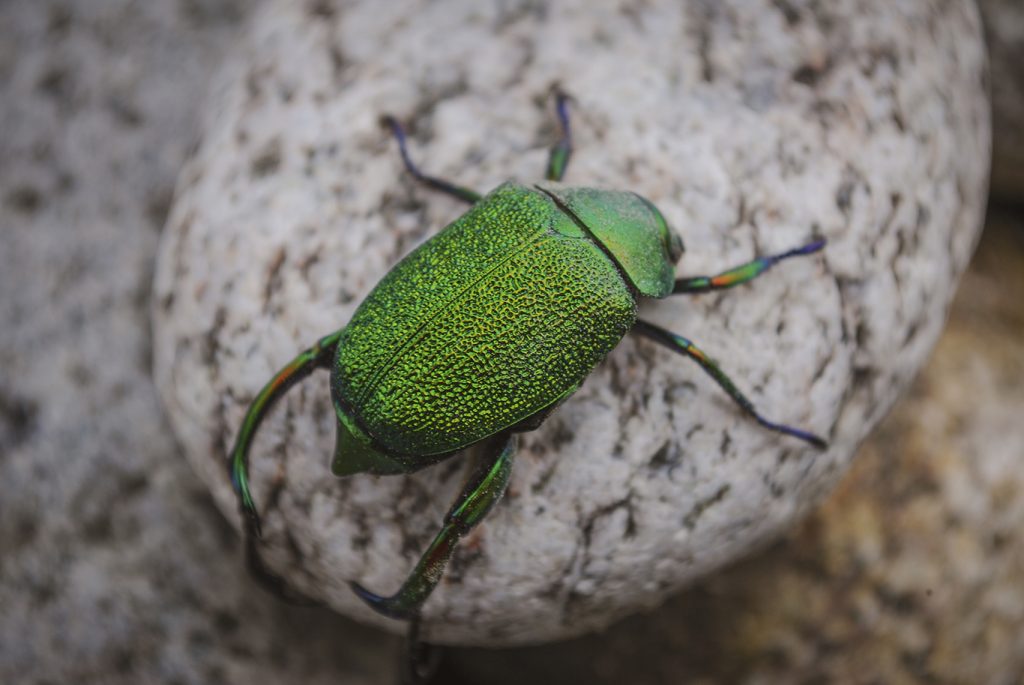
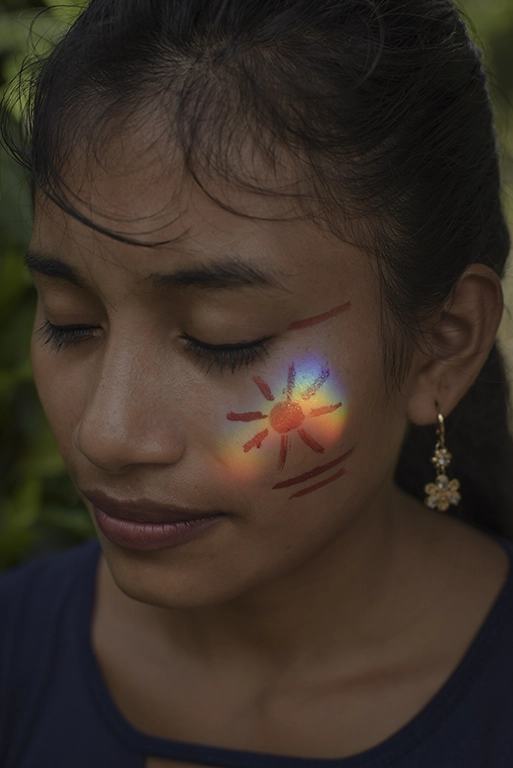
Backstage
A note from Johanna Alarcón
First, you’ve got to show up. You bring all the equipment, all the books, and a few facilitators to a new place. In this case, we headed into the Upper Amazon to Indigenous communities. This meant lugging backpacks through remote paths, trying to figure out how to charge cameras and schedule our collaborations and workshops long in advance.
Then you have to hand out that equipment and work with people who haven’t had the chance to walk through their territory, their homes, with a camera around their neck, in their hands. In the case of this project, Relatos en Territorio (Stories in Territory), we worked with Indigenous women land defenders. We wanted them to try out photography as a new way to relate to and express their experiences as defenders, as women, as protectors, and creators.
What they experienced, exchanged, and created is, as always, proof of why everyone should have the chance to relate to their world and to each other in as many ways as possible.
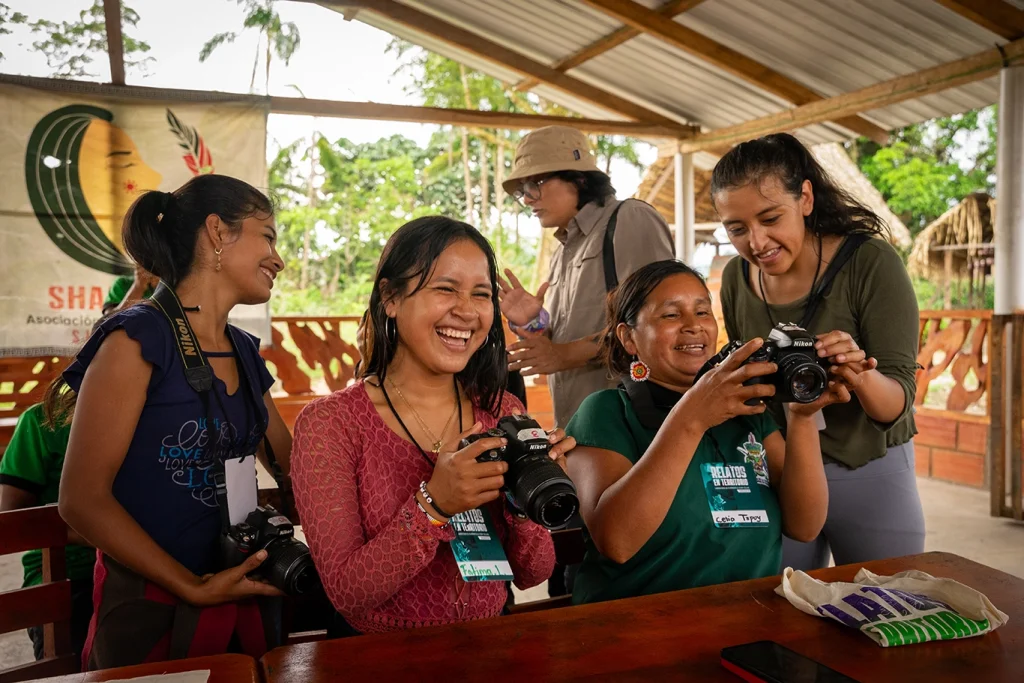
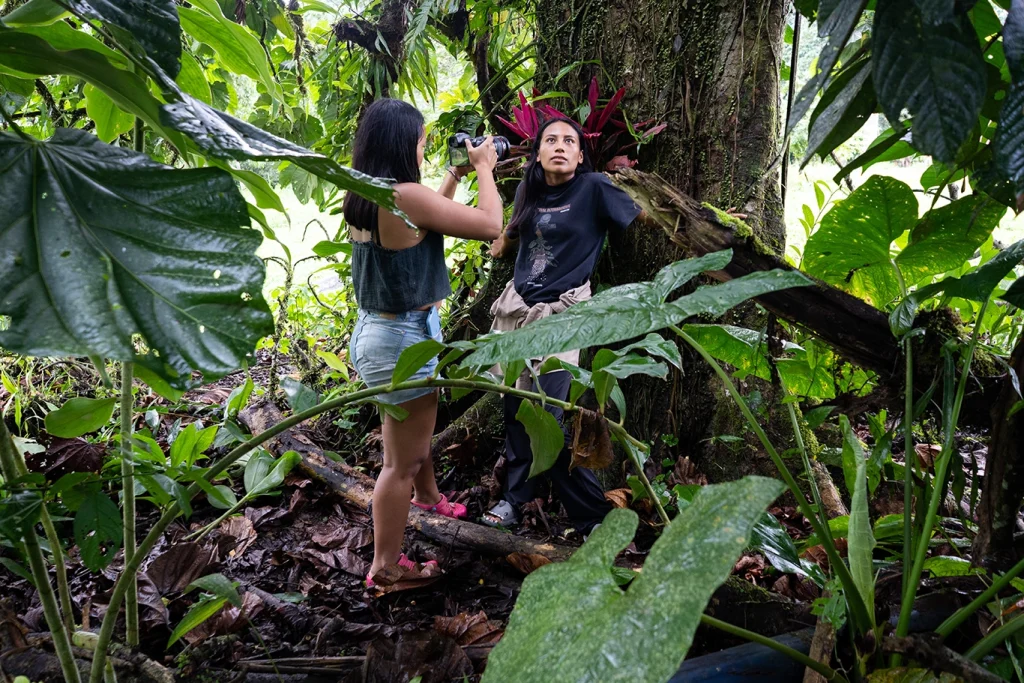
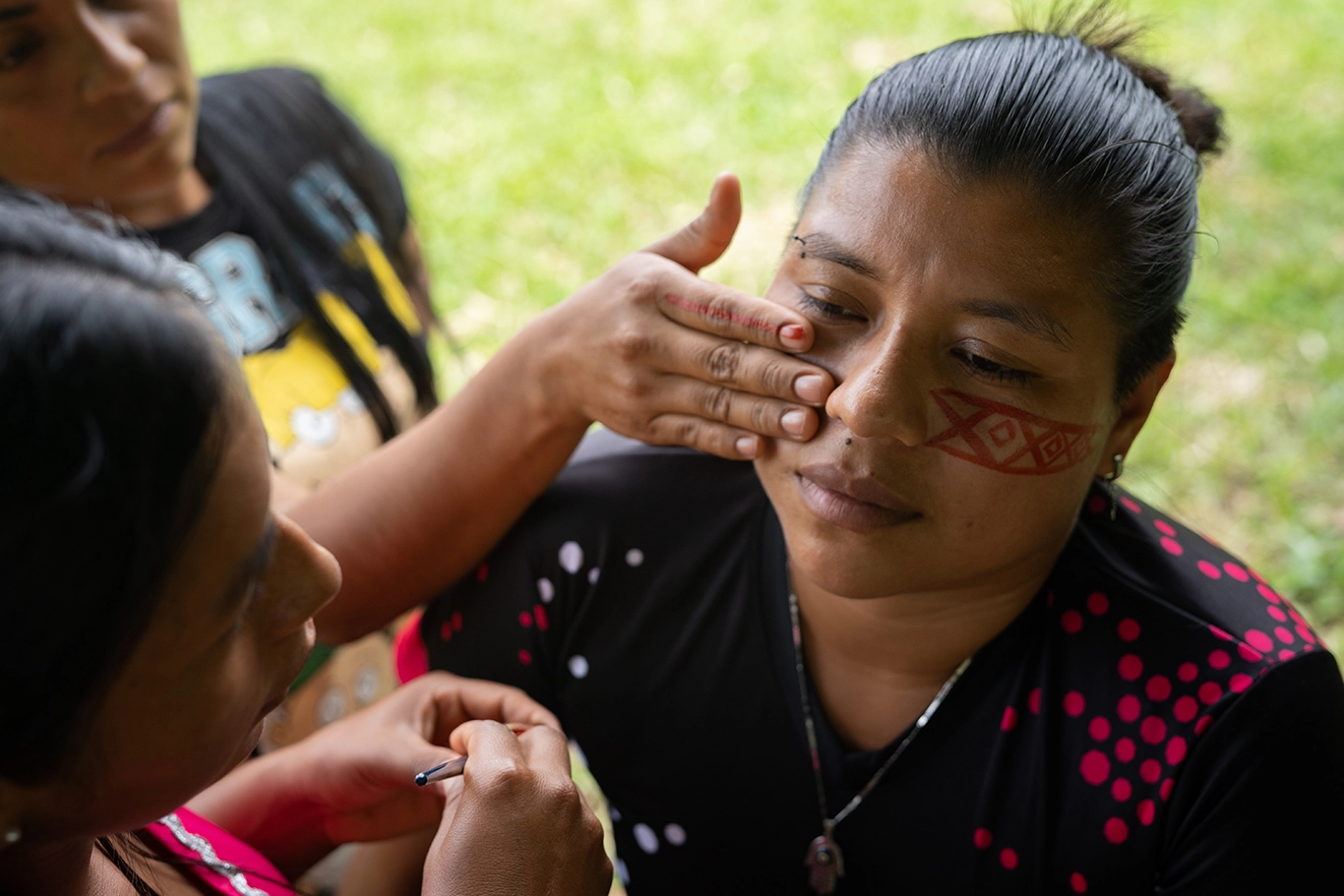
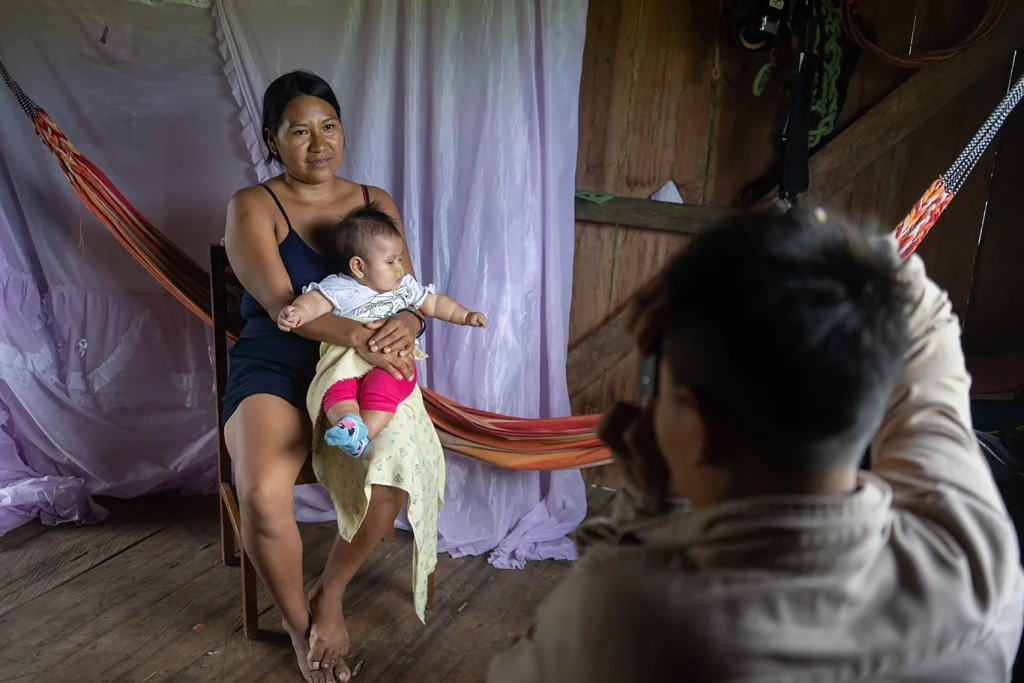
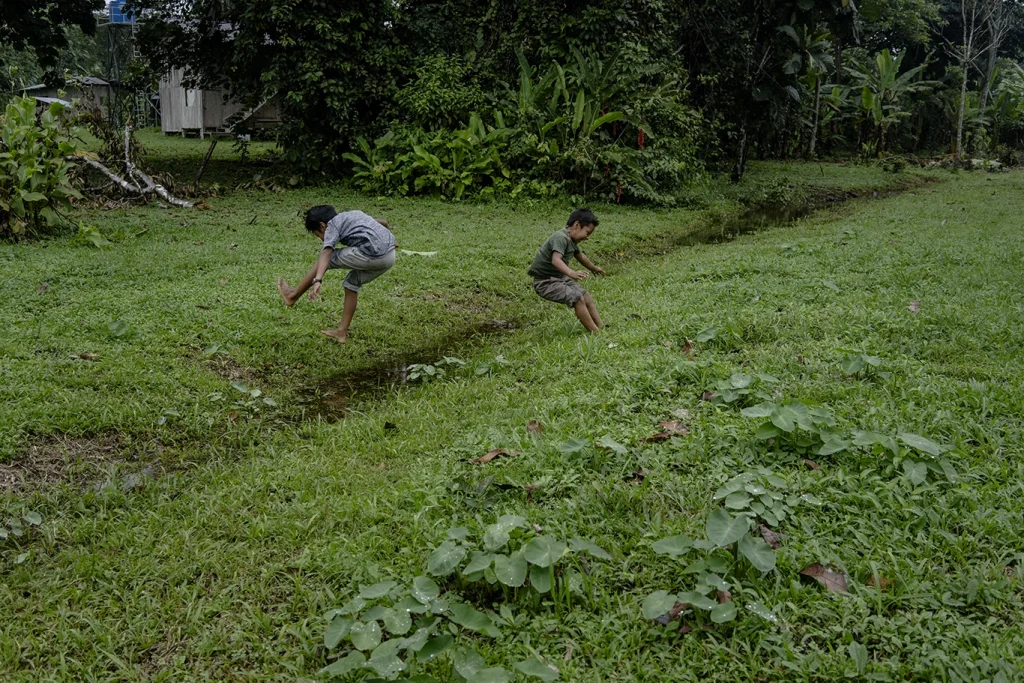
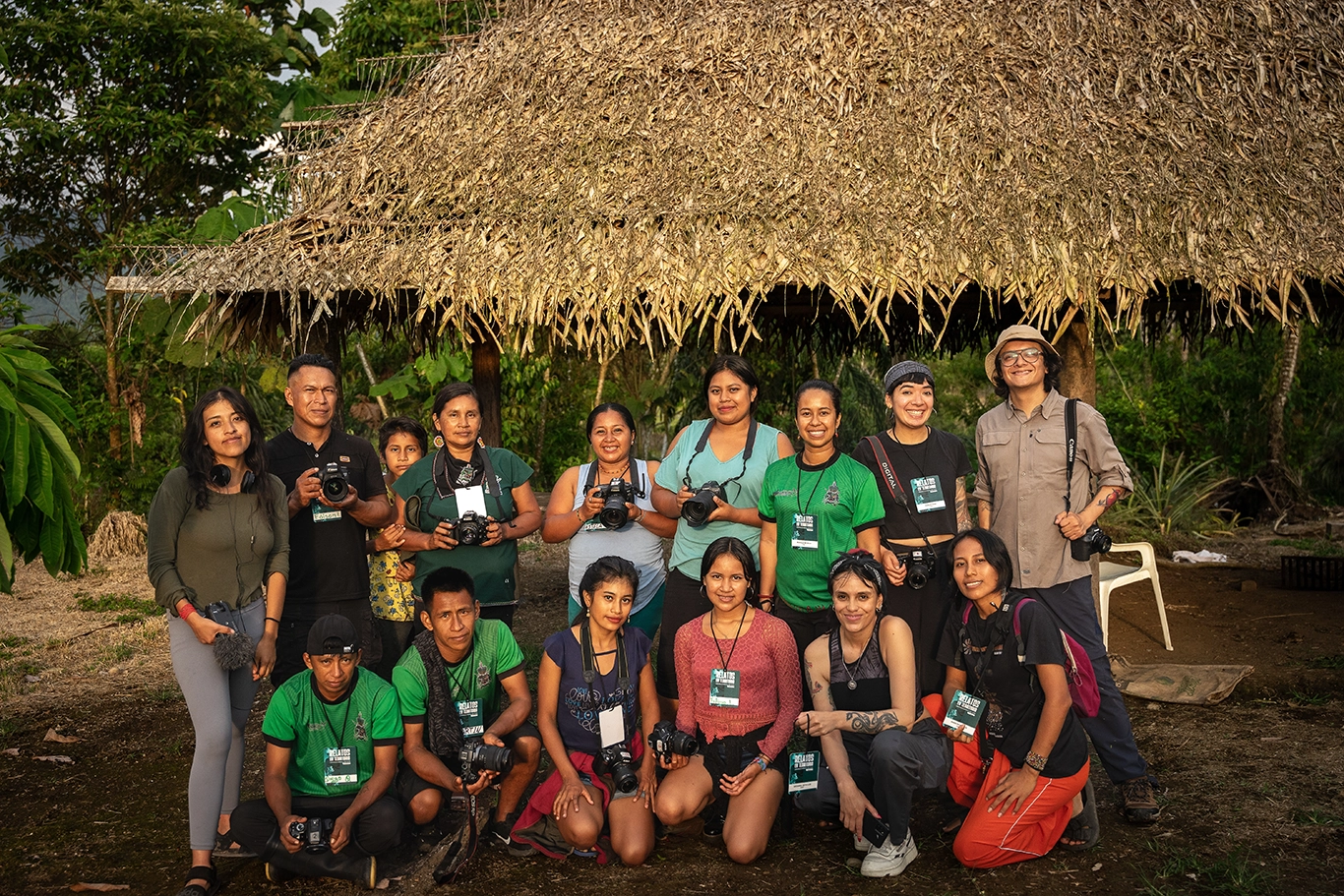
Diaries
Kichwa Photographer,
Sinangoe
Diary Excerpt:
Other women taking photos will see your work—when they see the photos you’ve taken, what would you like to tell them?
I would encourage them to keep going, because nobody is born knowing everything. The first photos I took were very dark, it was part of my learning. You have to practice, learn, use the camera.
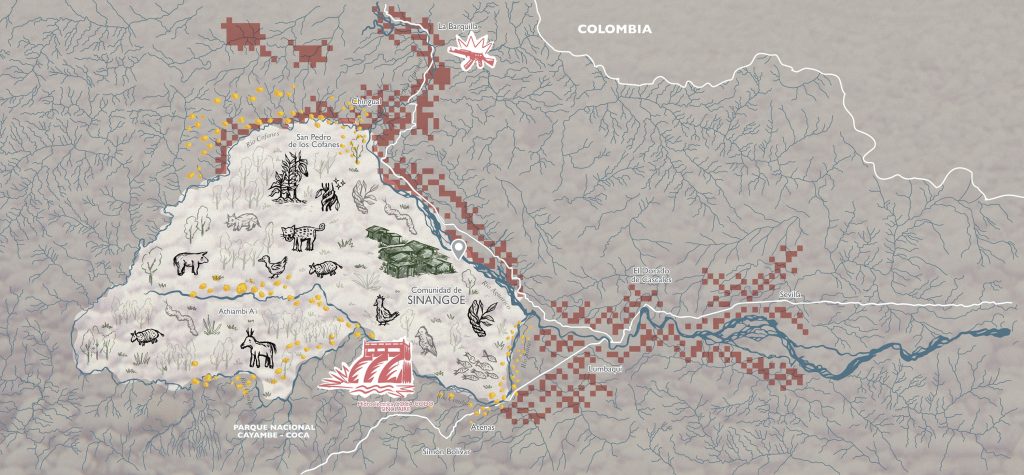
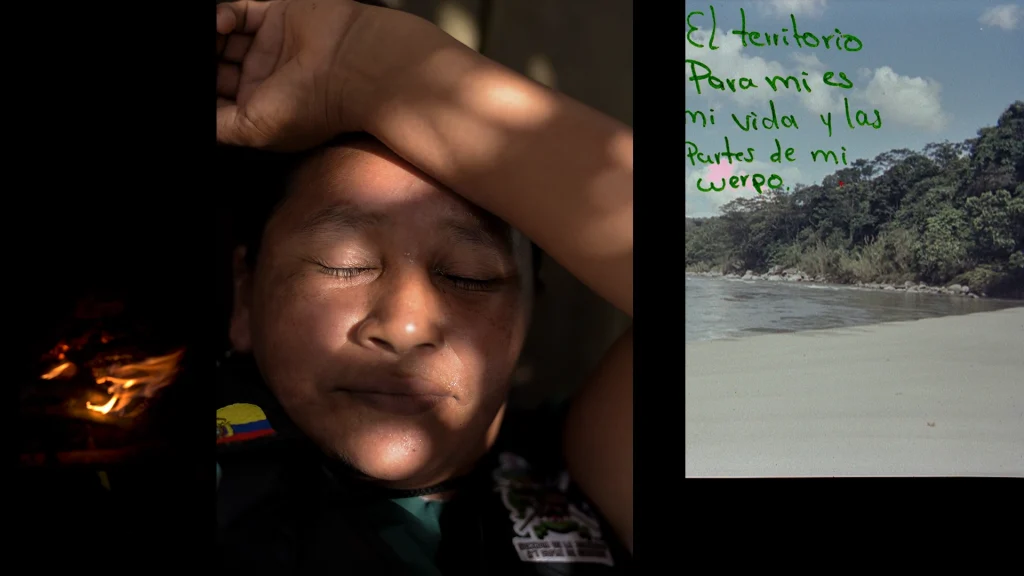
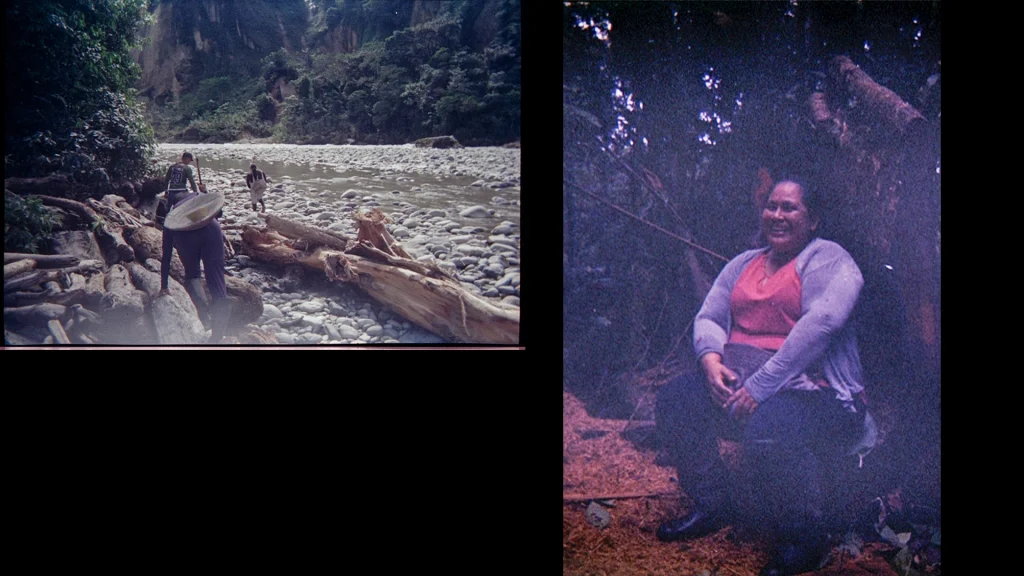
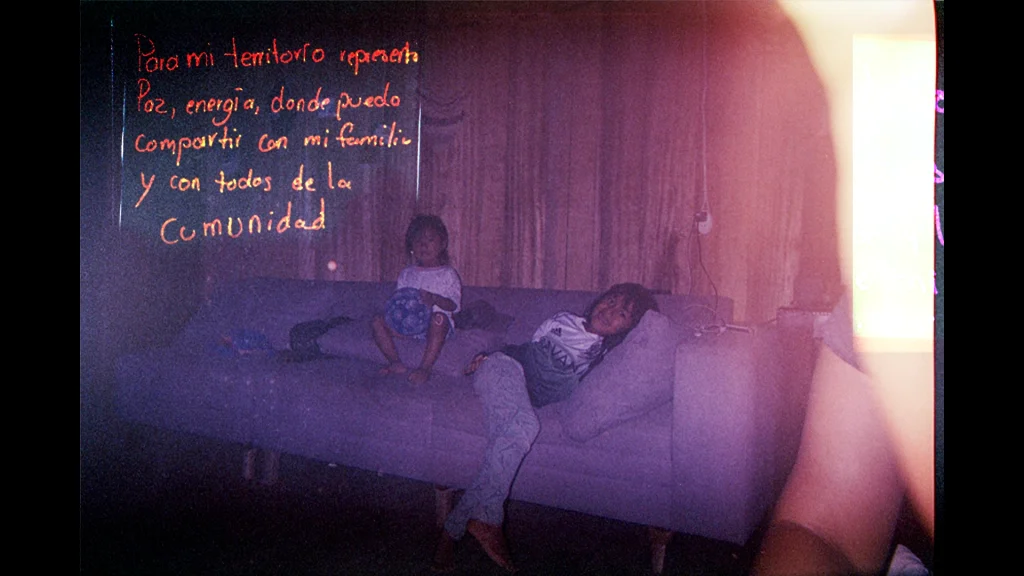
Siona Photographer,
from the Aboquëhuira community
Secoya Remolino workshop
Diary Excerpt:
When I am in other communities’ territories, there is nostalgia in my heart. I connect with photography, but at the same time, I feel that disconnection too. I cannot get to the root of where it is, because I have not been to my own communities, so there is still a void. I want to get there, but somehow I can’t.
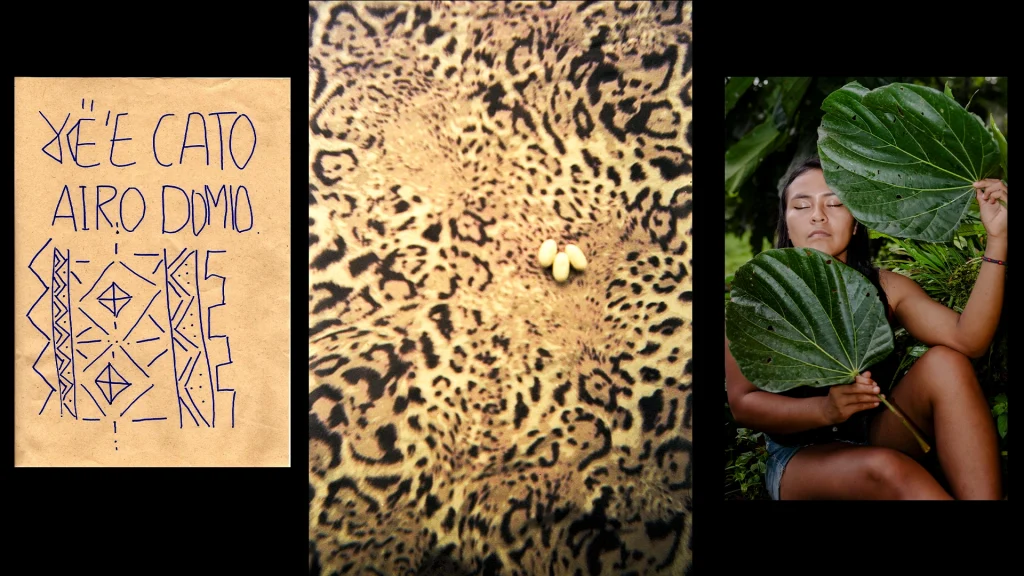
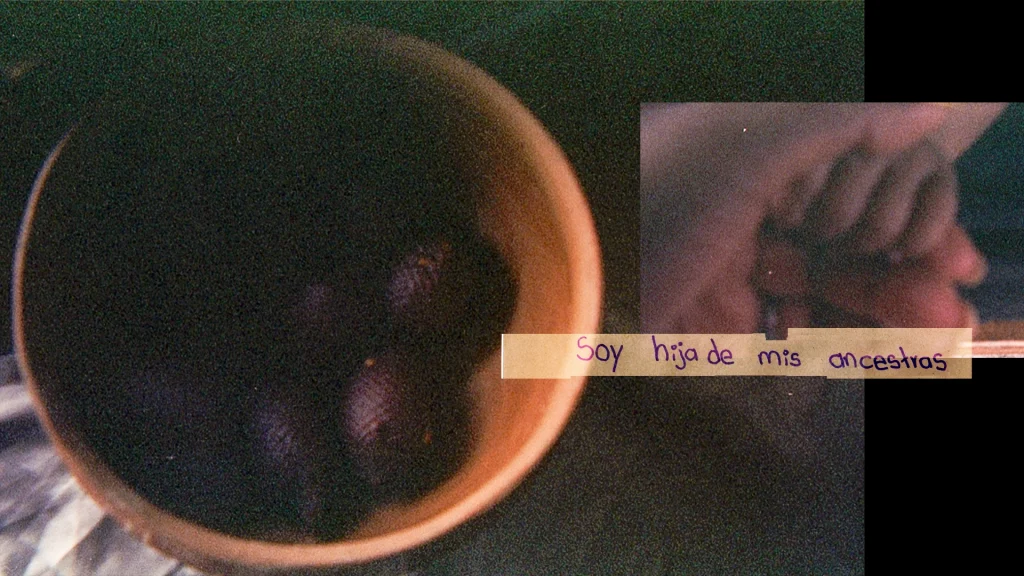
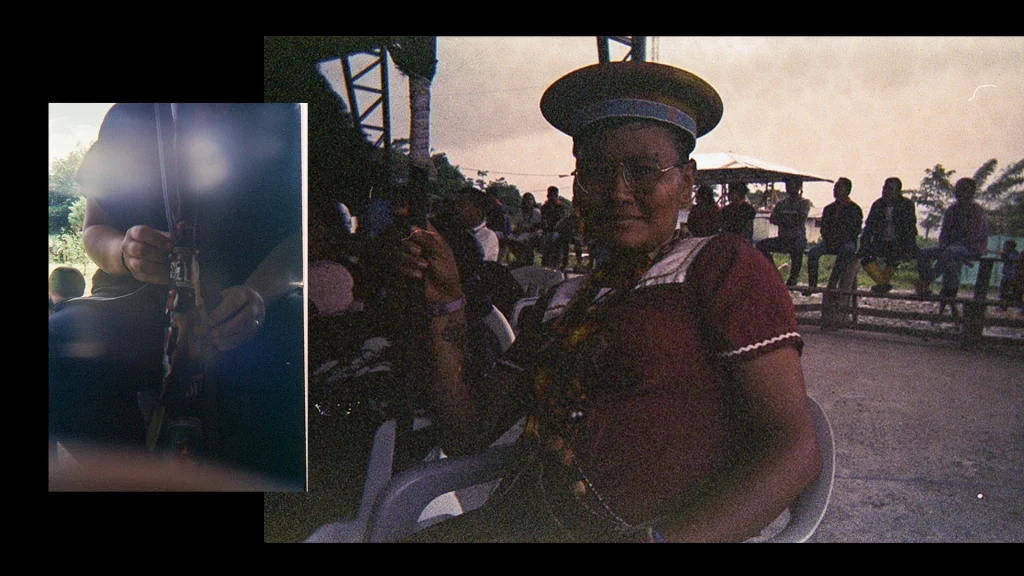
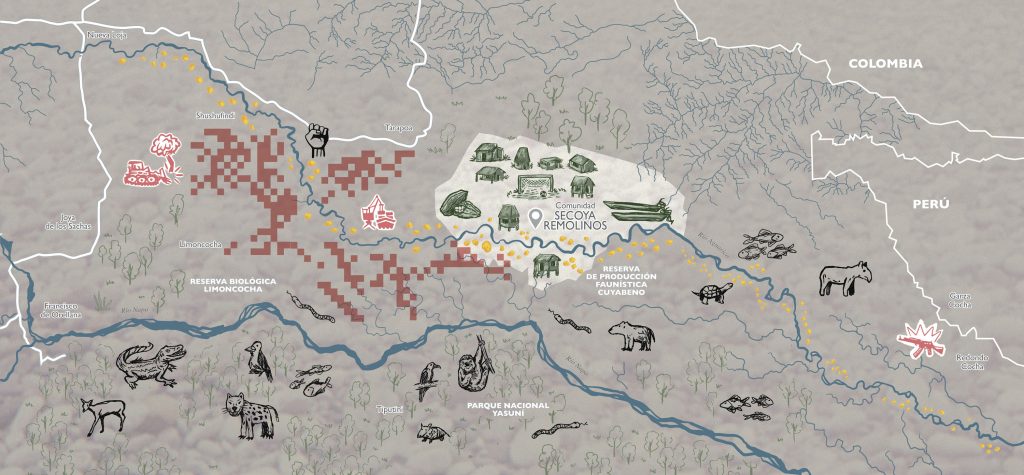
Siekopai Photographer,
Secoya Remolino
Diary Excerpt:
What is it that caught your attention, to take that photo?
I was thinking that all of my strength, my energy had been used up, and now it’s blooming again. That’s what I was thinking, and so I took the photo in that moment.
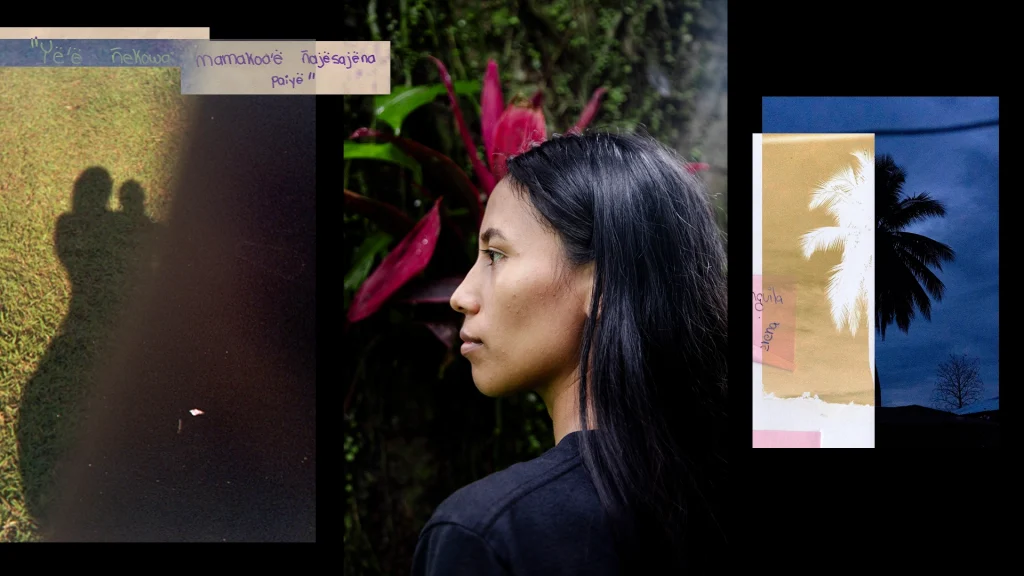
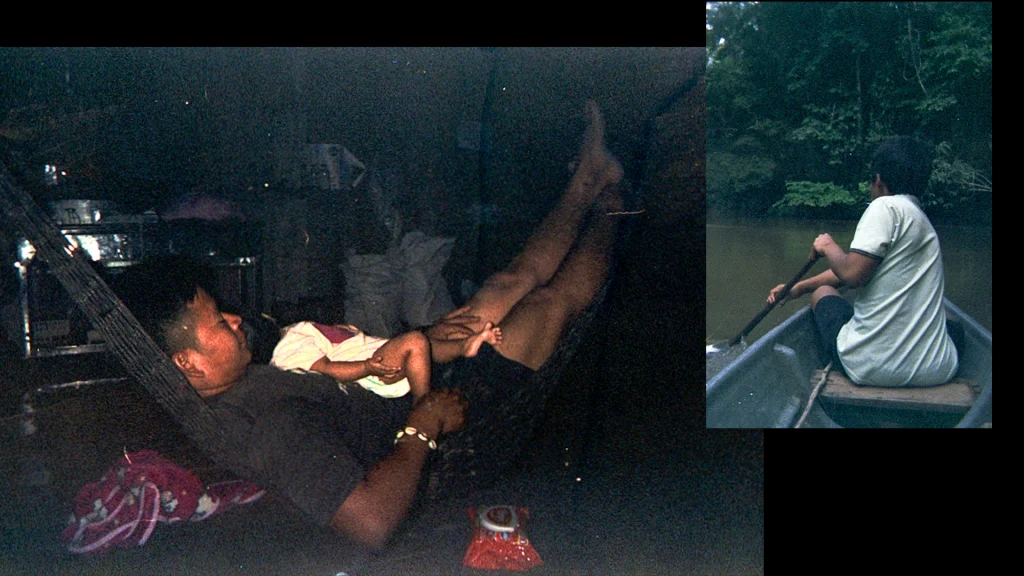
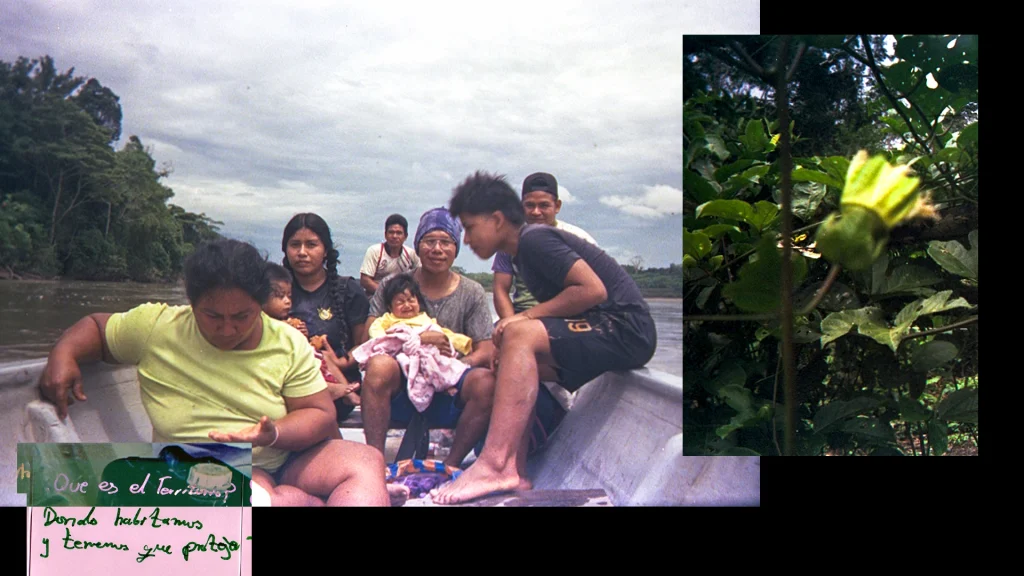
Kichwa Photographer,
Yuturi Warmi Indigenous Guard
Diary Excerpt:
In each photo—especially in the photos of rivers, landscapes, and women—I am saying that we were, and are, women who are united and want to keep our rivers clean and care for and protect our living forest.
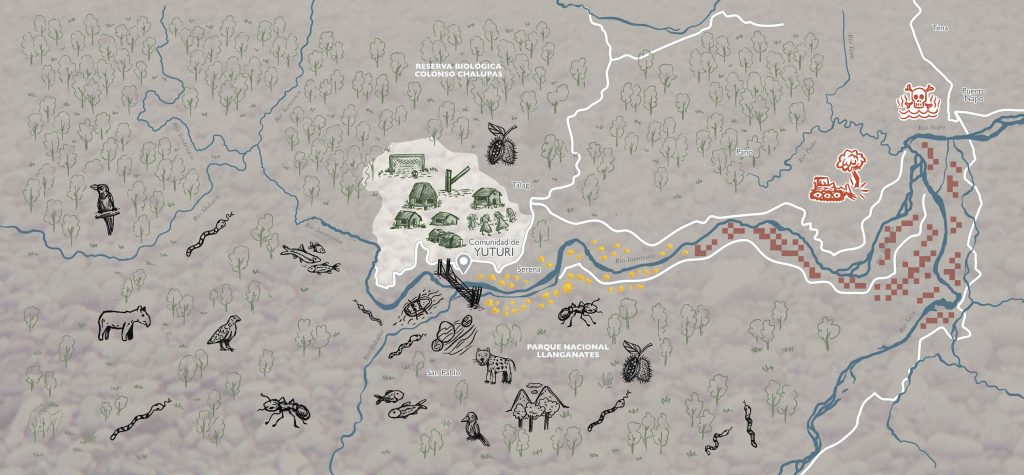
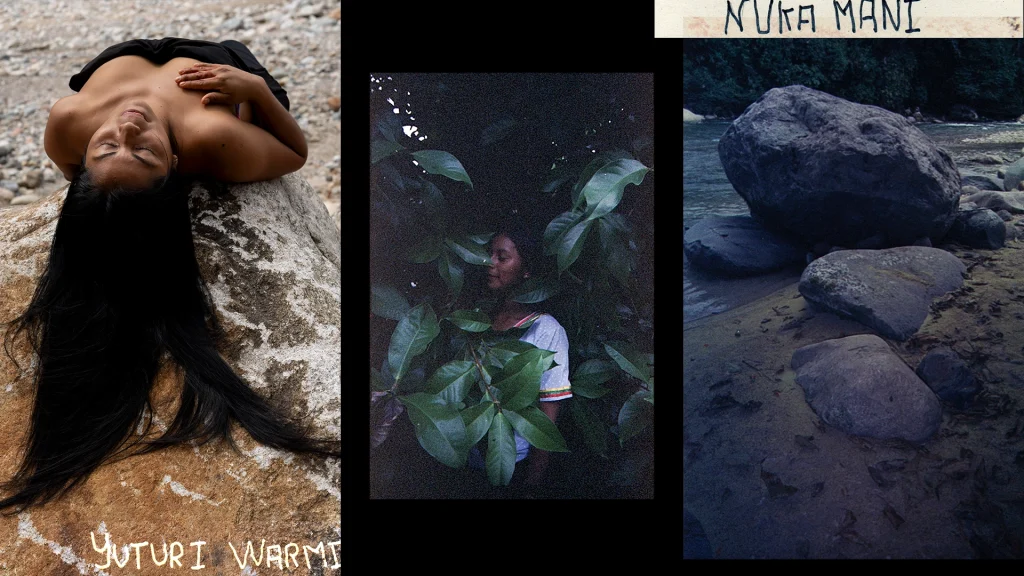
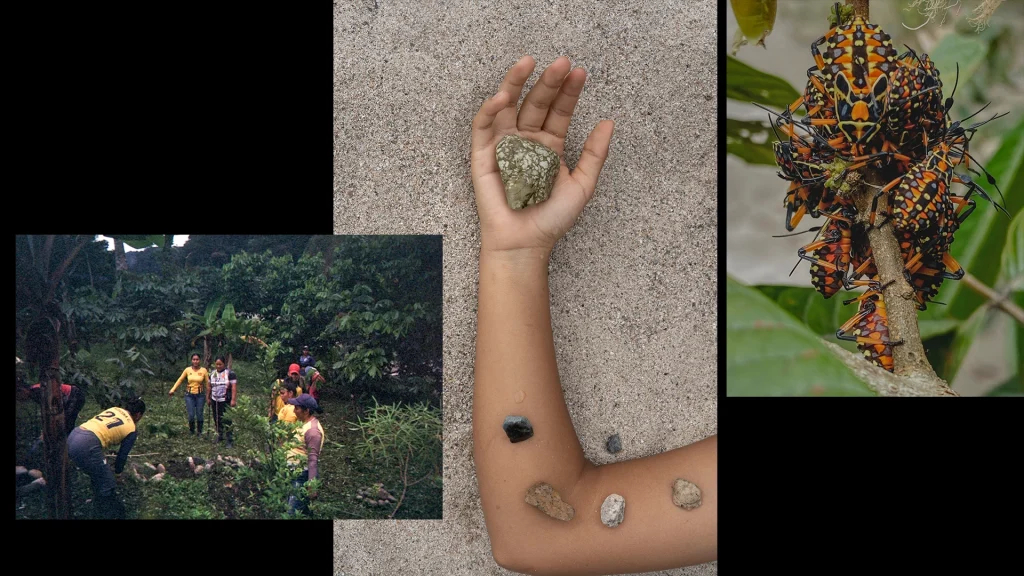
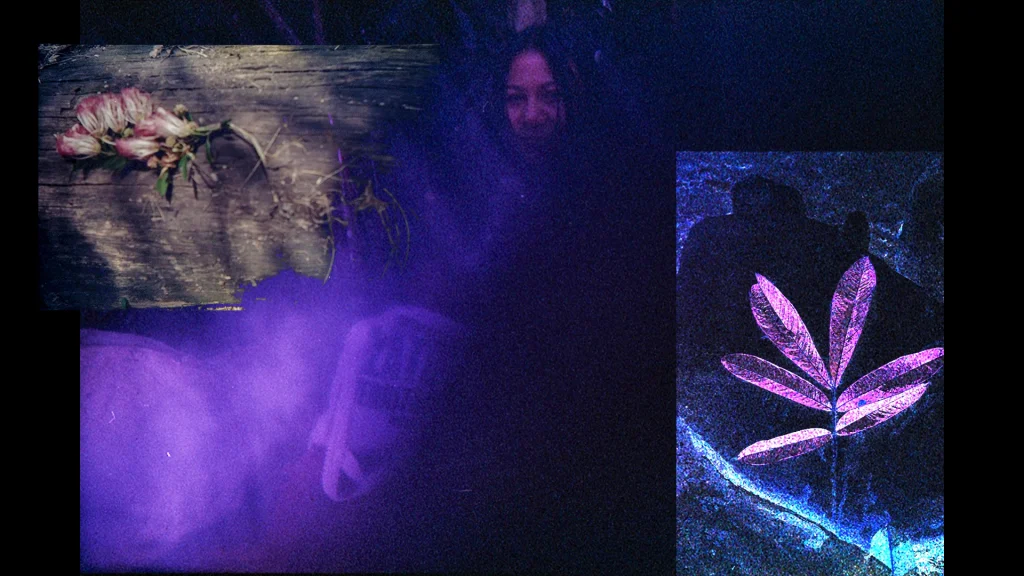
Thank you for visiting this digital exhibition of Relatos en Territorios (Stories in Territories).
This project aims to break stereotypes surrounding the Indigenous Guard and land defenders, showcasing the varied and complex nature of land defense work. The women whose work is featured here are a few of many throughout Indigenous territories who face the violence of extractivism, colonialism, and criminalization that tries to separate them from the territory; they share knowledge through their daily relationship with nature, and they are leading the creation of a transformative legacy for humanity and the planet’s existence.
With these workshops and this publication, we wanted to show what happens when these women have a new tool, the space to experiment with it, and a platform to present it. We hope you’ll carry these images and the reflections they evoke forward with you.
Credits
Participants –
Gente de Río Communication School, Secoya Remolino Community
Antonio Noteno
Aurelia Ahua
Daris Payaguaje
Judy Payaguaje
Milena Piaguaje
Tamara Alvarado
Participants –
Kuirasundekhu Indigenous Guard, A’i Cofán community of Sinangoe
Ariana Andy
Ana Lucitante
Celia Tapui
Elizabeth Noteno
Estela Criollo
Edison Lucitante
Fatima Lucitante
Joselyn Andi
Jefferson Quenama
Martin Quenama
Morella Mendúa
Participants –
Yuturi Warmi Indigenous Guard, Serena community
Elsy Alvarado
Elva Tanguila
Elsa Cerda
Leyla Cerda
Nashly Alvarado
Irene Alvarado
Kaina Cerda
General Direction/Coordination
Johanna Alarcón
General Production
Dayanna Cevallos
Cargo
Nombre
Educators
Johanna Alarcón
David Díaz
Michelle Gachet
Karen Toro
Logistics Assistants
Reinaldo Coba
Santiago Haro
Morella Mendúa
Jan Parra
Backstage
Daris Payaguaje
Santiago Haro
Video Editing
David Díaz
Film Developing and Digitization
Geovanni Villegas – VS Foto
Editorial Design
Darwin Pizarro
Map Illustration
Luis Loaiza
Web Design
Mónica Aranda
Omar Bobadilla
Edited
Allison Keeley
Journalist
Alejandra Alzate
Supported by

Supported by

Supported by


